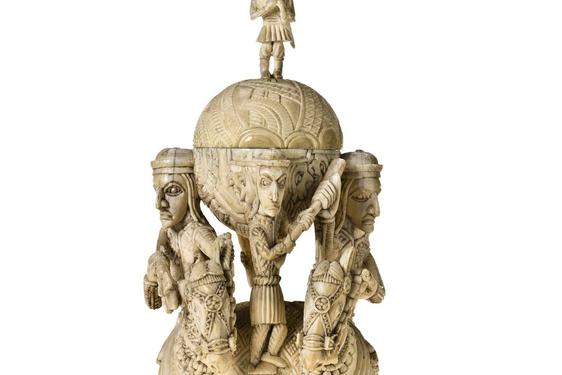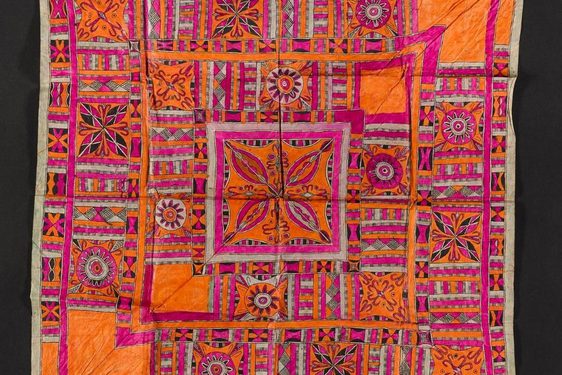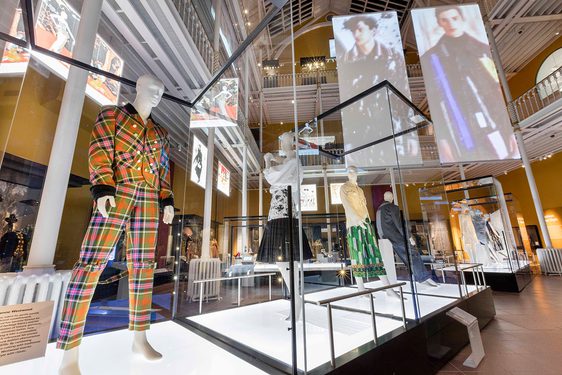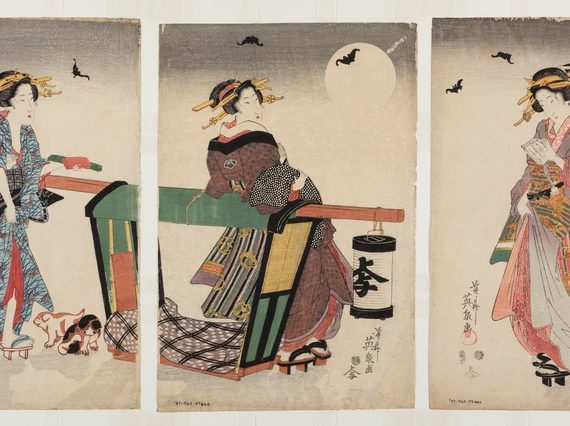
An introduction to our Japanese collection
News Story
There are over 12,000 objects in our Japanese collection. Explore highlights and learn about some of the different areas, from tiny netsuke to cutting edge designs.
1. Prints and paintings
There are over 5,000 colour woodblock prints in the National Museums Scotland collection. The majority are by well-known 19th-century artists Kuniyoshi, Kunisada and Hiroshige. The prints cover four of the main genres of the ukiyo-e school: warriors, landscapes, beauties, and theatre.
The number of woodblock-printed illustrated books (ehon) in our collection has recently increased thanks to an Art Fund New Collecting Award. To date there are 101 volumes, including titles by Hokusai, Utamaro and Kyosai.
The Museum also cares for about 75 paintings from the 17th to 20th centuries. These include works in hanging scroll, handscroll, album, fan and folding screen formats.
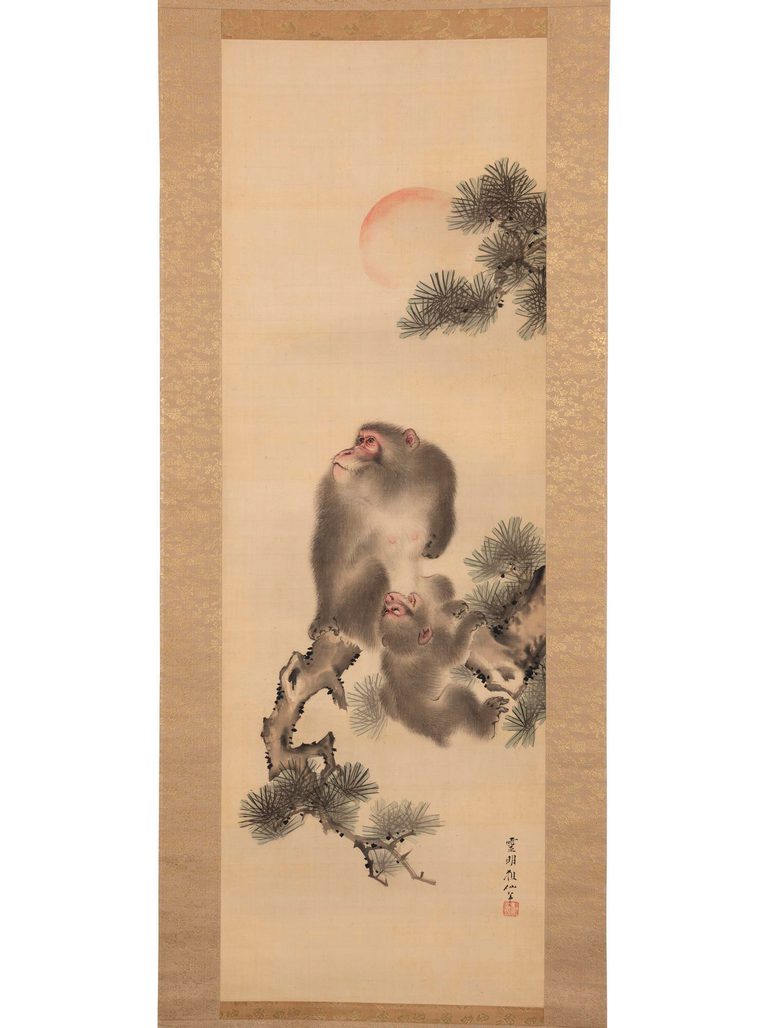
2. Archaeological material
An internationally significant collection of Japanese archaeological material was donated to the Museum in 1908-14 by the Scottish physician Dr Neil Gordon Munro.
This collection of over 2,000 items includes ceramics, stone tools, shells and bones. These date from the Jōmon (c.10,000–400 BCE), Yayoi (c.400 BCE–300 CE), and Kofun (c.300–538 CE) periods. The clay haniwa figure of a horse is approximately 55cm tall. It can be seen in the Inspired by Nature gallery at the National Museum of Scotland. Other examples of archaeology, in the nearby Exploring East Asia gallery, illustrate the technological links with the continent, especially the Korean peninsula.
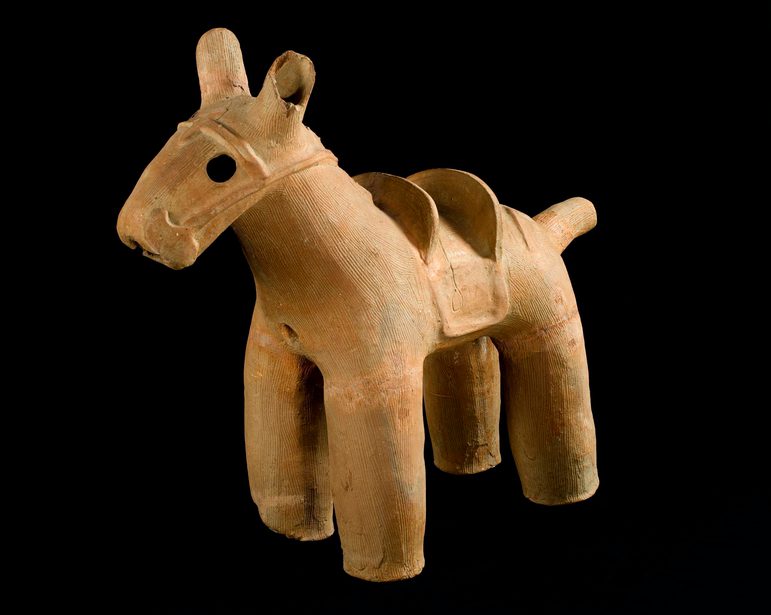
3. Ainu objects
The Museum also cares for a significant collection of about 350 Ainu objects. The Ainu, indigenous people now mainly living on the island of Hokkaido, have an artistic style distinct from mainland Japanese. Common Ainu designs can be seen in the robe above. It was donated to the Museum by Dr Munro as part of a group of 225 historic Ainu objects, including ritual items, domestic clothing, and accessories. You can see a selection of Ainu objects, including contemporary woodcraft and embroidery, on display in the Living Lands gallery at the National Museum of Scotland.
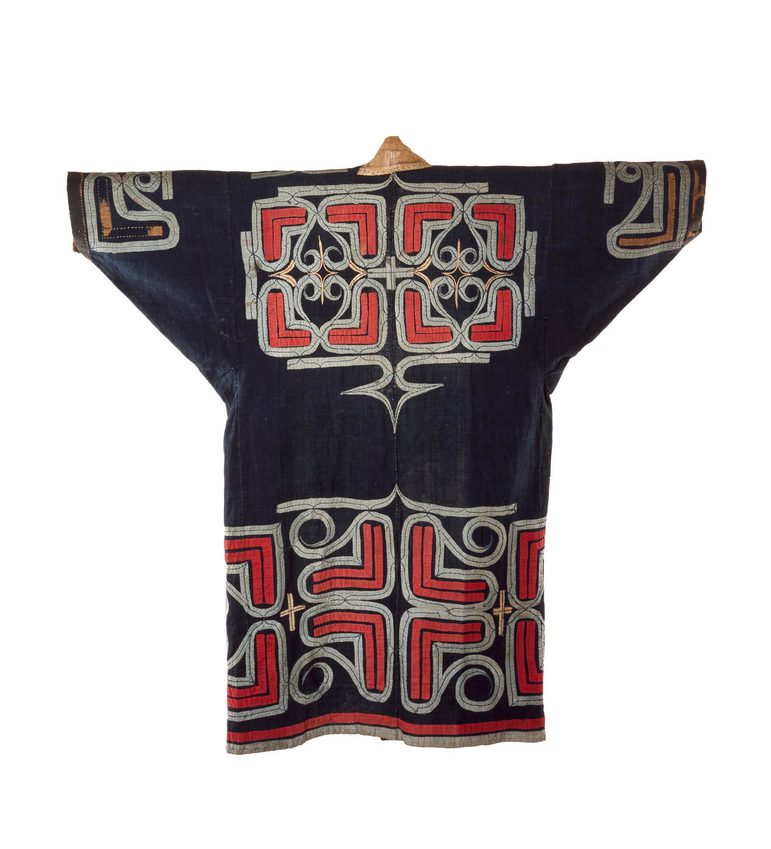
4. Ceramics
The Japanese collection boasts over 1,600 ceramics. Many of these were donated to the Museum. A collection of 134 pieces of Chinese-style blue-and-white porcelain (known as Shonsui ware) was donated in the early 2000s by Rene Finch.
In 2015 more than 300 Japanese ceramics were donated by David and Anne Hyatt King via the Art Fund. The Kings mainly collected porcelain presentation pieces and works by named potters’ lineages from the 17th to 20th centuries. 32 pieces including examples of their favoured Hirado ware, as shown above, are on display in the Exploring East Asia gallery.
In 2022 the Museum acquired, partially via donation, the Anne and David Hale collection of Tōhoku ceramics. It features over 300 pieces, mostly 19th- and 20th-century stoneware, produced in the Northeast region of Japan.
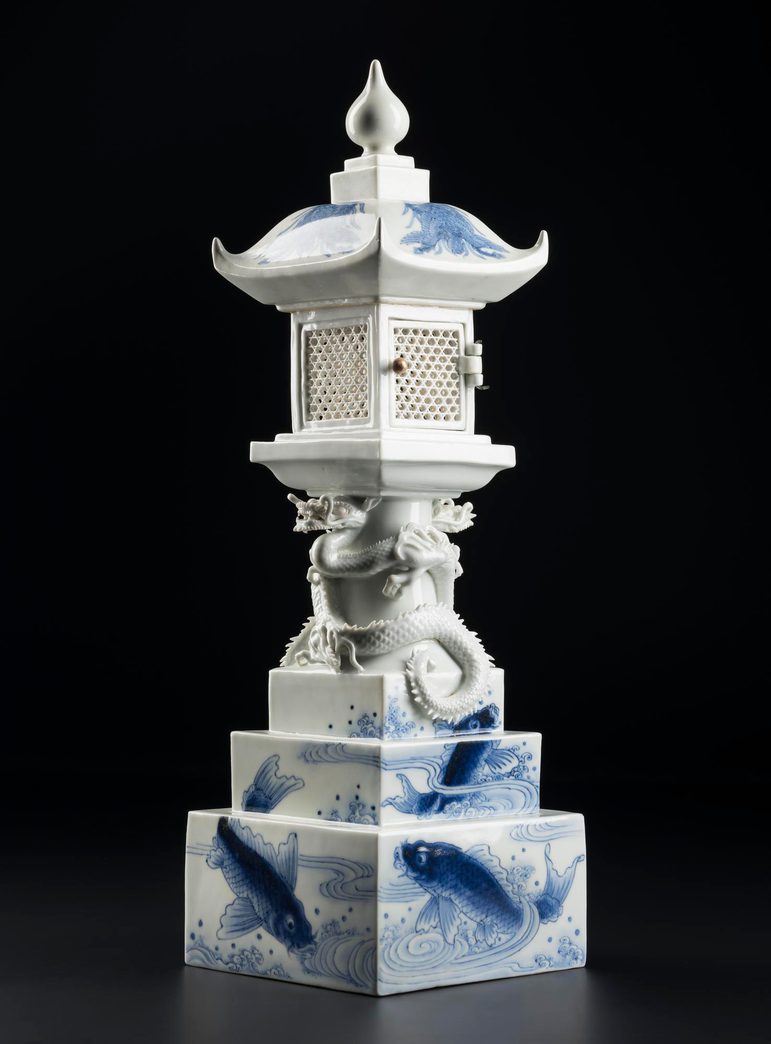
5. Arms and armour
In arms and armour, there are six suits of armour, around 20 swords, daggers and glaives, five matchlock guns, and an indoor archery set. Some of the swords and spears were transferred from the South Kensington Museum (now the V&A Museum) in 1866, having formed part of the diplomatic gift in 1859 from the shogun Tokugawa Iemochi to Queen Victoria.
There is also a collection of about 400 pieces of finely crafted sword fittings, including sword-guards (tsuba) like the one above. A full suit of armour and a range of swords and fittings can be seen in the Exploring East Asia gallery.
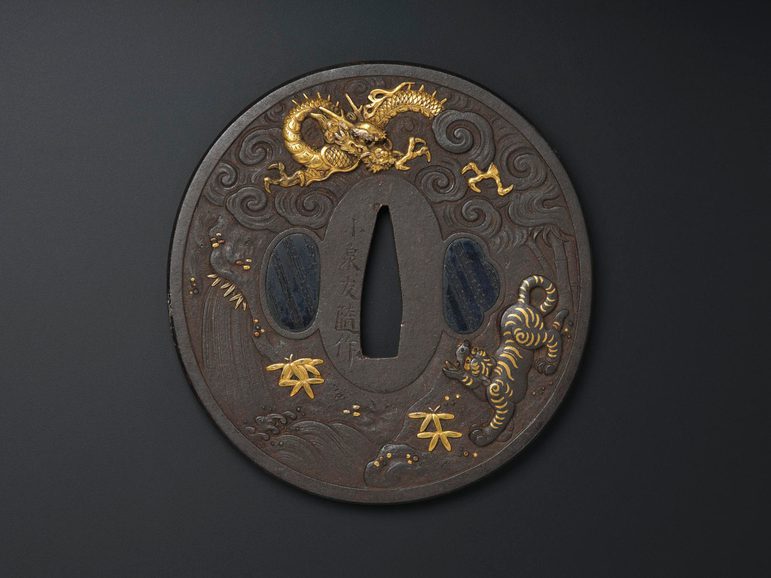
6. Clothing and textiles
The Museum has about 130 pieces of clothing and thousands of textiles. The majority of garments are women’s robes, often referred to as kimono, which are decorated with beautifully dyed and embroidered designs. There is a group of 27 embroidered gift covers (fukusa) donated by Thomas Clarke-Thornhill in 1926. There is also a large group of 19th-century textile samples illustrating a variety of production techniques and patterns.
In 2023 we received a donation of 60 Japanese garments, mainly from the early 20th century, from Moira Prior. These include children’s and menswear as well as many examples of the kasuri dyeing and weaving technique.

7. Lacquerware
There are around 150 lacquerware items in the collection. These are mainly writing and document boxes, picnic equipment, and various kinds of small container. This includes 67 medicine or seal cases known as inrō. Inrō, small lacquered wooden cases made up of several compartments, were a popular accessory for men in the Edo period (1600-1868). The example above is typical of Japanese taste in lacquer. It has a floral motif in gold and red lacquer against a black lacquer background.
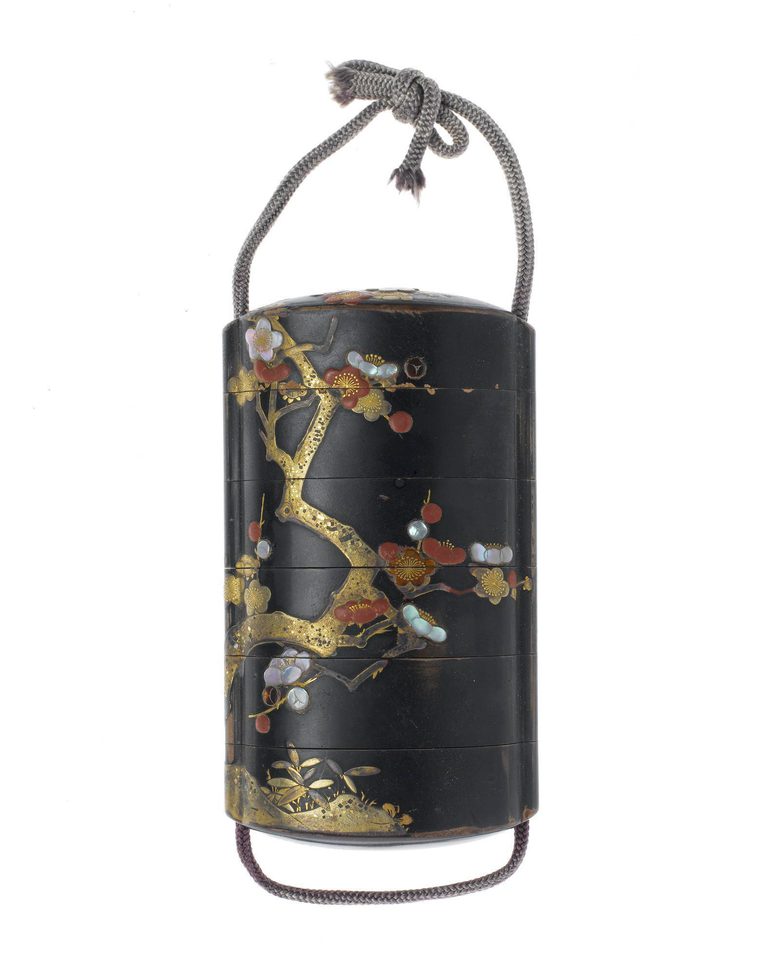
8. Netsuke
Netsuke are small carved toggles which were attached to inrō cases by a cord to secure them to a man’s obi (sash). There are almost 1,000 netsuke in the Museum’s collection. Netsuke can be made of many different materials but ivory and wood are the most common. They are like miniature sculptures and feature detailed carving all around. Animals, people and mythical creatures were popular subjects. You can see a selection of these, including the octopus shown above, in the Inspired by Nature and Exploring East Asia galleries.
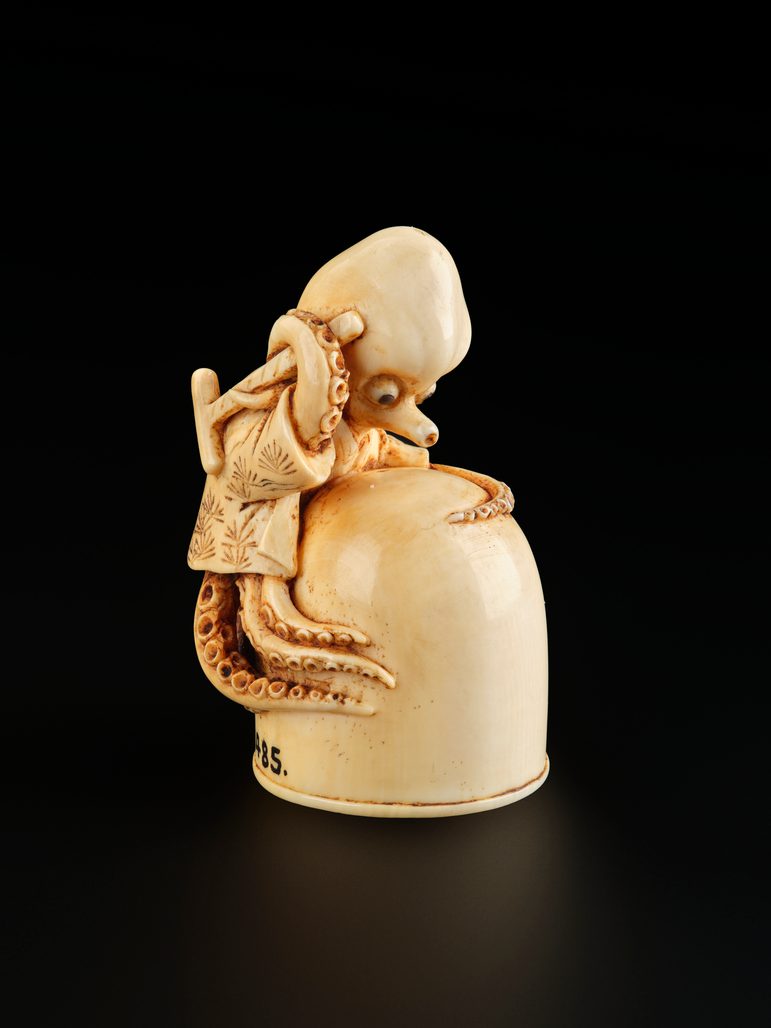
9. Buddhist artefacts
Buddhist artefacts are well represented in the collection. There are three large bronze figural sculptures, two large bronze temple lanterns, lacquered household shrines, two paintings, many ritual implements, percussion instruments, and items used by mendicant priests. A temple lantern can be seen in the entrance hall to the National Museum of Scotland. There are large Buddhist statues on display in the Grand Gallery, Sculpture gallery, and Exploring East Asia gallery. The Exploring East Asia gallery also features a range of smaller Buddhist objects, including a lacquered shrine.
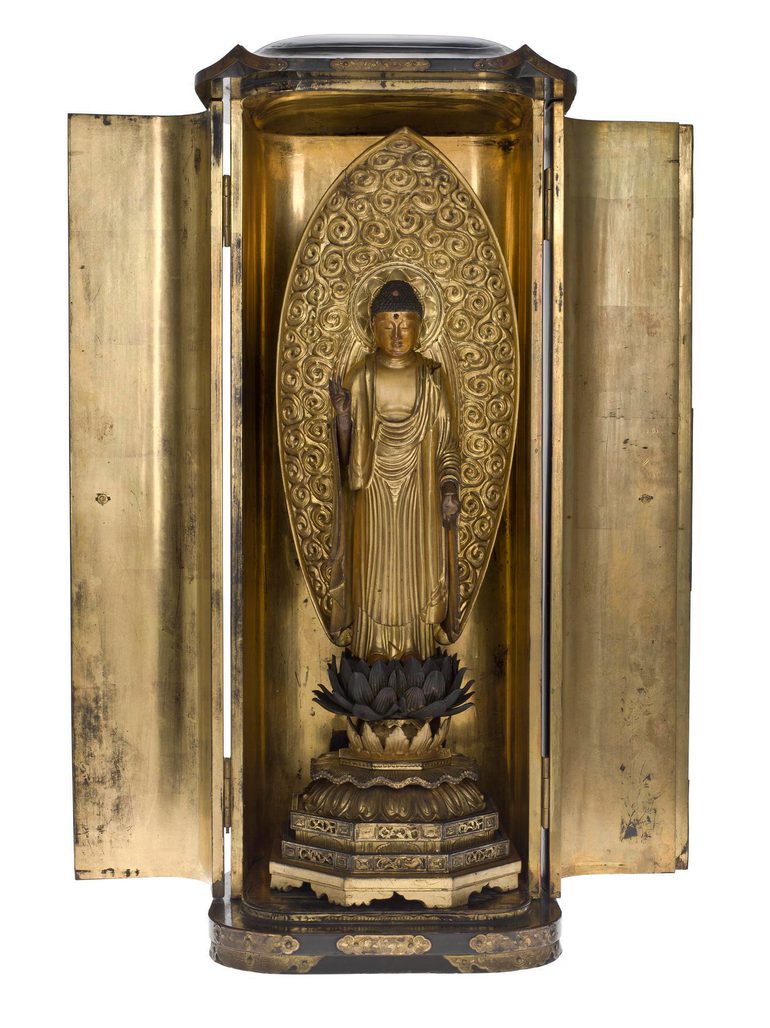
10. 20th century and contemporary Japan
The Museum’s collection of 20th-century Japanese art covers a wide range of material. From woodblock prints, mainly from the 1930s, 1980s and 1990s, to ceramics. In 1989 Lebe Tokimasa bequeathed approximately 700 household items from the mid-20th century. These are mostly ceramics and kitchen utensils purchased in Japanese department stores.
The Museum holds numerous works by the Kondō family, with several of their ceramics on display in the Artistic Legacies gallery at the National Museum of Scotland. Other ceramic artists include Sakiyama Takayuki, Kishi Eiko and Hitomi Hosono.
In recent years, a strong collection of contemporary jewellery, like the necklace above, and studio crafts has been built up. Jewellery artists include Hiramatsu Yasuki, Suō Emiko, and Sonobe Etsuko. There is glass by Takahashi Yoshihiko and Mitsushima Kazuko, bamboo craft by Buseki Suikō, and metalwork by Hatakeyama Kōji and Ōsumi Yukie.
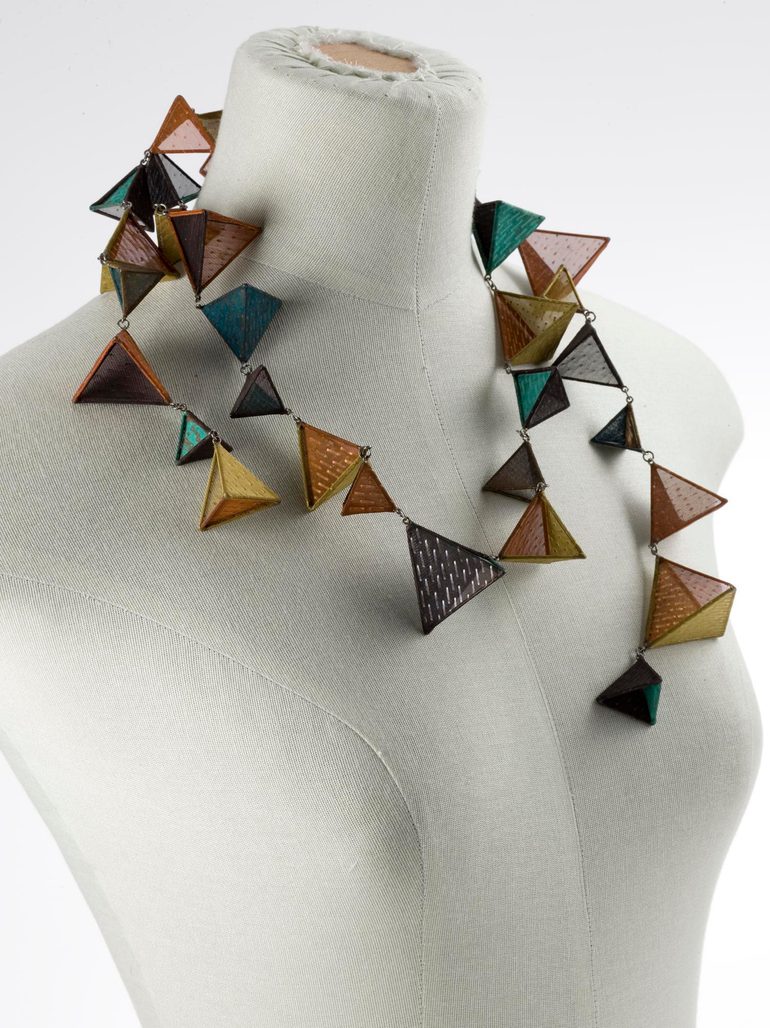
Main image: Colour woodblock print triptych depicting women beside a palanquin under a full moon, with puppies and bats, by Keisai Eisen, Japan, c. 1840. Museum reference A.1887.745.97.44.1.
